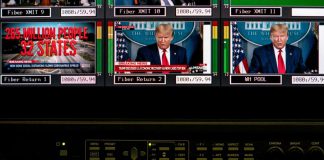OCTOBER 9, 2019
 Singapore financial district at dusk.
Singapore financial district at dusk.
Singapore has overtaken the U.S. to become the most competitive nation in the world, according to the World Economic Forum (WEF).
In its 2019 Global Competitiveness Report, the WEF measured the strength of 103 key indicators, such as inflation, digital skills and trade tariffs, across 141 countries.
The key indicators in the report were organized into 12 pillars, which included institutions, macroeconomic stability and health.
The U.S., which held the top spot in 2018’s ranking, dropped into second place this year, although the report’s authors noted that it “remains an innovation powerhouse.”
America received the highest score in the world in several subcategories, including ease of finding skilled employees and venture capital availability, with the U.S. also being ranked higher than any other country in the business dynamism pillar.
However, the country scored relatively low in some categories, with increasing trade tariffs, declining life expectancy and low digital skills among the American population taking a toll on the United States’ overall ranking. The WEF noted that life expectancy in the U.S. is now lower than it is in China, with the U.S. having only the 39th highest life expectancy in the world amid its ongoing opioid crisis.
Singapore, named the most competitive economy in the world, scored highly for its public sector, labor force, diversity and infrastructure. On life expectancy, Singapore was ranked number one, with newborn children expected to live until the age of 74.
In comparison, life expectancy in the U.S. is 66 years old, while in China it’s 68.
The 10 most competitive countries in the world
- Singapore
- United States
- Hong Kong
- Netherlands
- Switzerland
- Japan
- Germany
- Sweden
- United Kingdom
- Denmark
Hong Kong, the Netherlands and Switzerland rounded out the top five, with Hong Kong rising four places from 2018 despite intensifying political unrest in the territory.
Overall, Asia-Pacific was named the most competitive region in the world, followed by Europe and North America.
The average score out of 100 across the 141 nations was 61, with the WEF claiming that the gap was a greater concern now in the face of a global economic slowdown. Reigning Singapore scored a total of 84.8 points, with second-place America being awarded 83.7 points.
‘Geopolitical context’
The report, published Tuesday, warned that most economies were locked in a cycle of low or flat productivity growth. According to its authors, nations that have invested in four key areas — human capital, improving their institutions, innovation and “business dynamism” — would be best placed to withstand a global slowdown and revive domestic productivity. However, they warned the effects of a slowdown were likely to be exacerbated by simmering geopolitical tensions.
“The changing geopolitical context and rising trade tensions are fueling uncertainty and could precipitate a slowdown,” the WEF said in a press release on Tuesday. “However, some of this year’s better performers appear to be benefiting from the trade feud through trade diversion.”
Those countries included Singapore and Vietnam, which was the most improved country in this year’s index in 67th place.
Urging policymakers to prepare for an evolving economic landscape, the WEF called on governments to better anticipate and implement the social policies that would be needed to prepare their populations for the fourth industrial revolution.
The organization said many of the world’s largest and most innovative economies had education systems which were failing to keep up with the pace of innovation, including South Korea, France, China, India and Brazil.
Another key concern raised by the WEF’s report was the fact that economic stagnation was widespread despite an injection of more than $10 trillion by central banks over the past decade. The authors of the report emphasized that monetary policies were beginning to “run out of steam.” As a consequence, it was crucial for economies to rely on fiscal policy, as well as public incentives that could boost research, enhance the skills of the current and future workforce, and develop new infrastructure and technologies, the report noted.
“What is of greatest concern today is the reduced ability of governments and central banks to use monetary policy to stimulate economic growth,” Saadia Zahidi, head of the WEF’s Centre for the New Economy and Society, said in a press release Tuesday. “This makes it all the more important that competitiveness-enhancing polices are adopted that are able to boost productivity, encourage social mobility and reduce income inequality.”
Central banks around the world have been easing monetary policy this year in a bid to encourage spending and boost the slowing economy.
In September, the European Central Bank unveiled a broad stimulus package that included fresh quantitative easing and a cut to interest rates. Meanwhile, the U.S. Federal Reserve has lowered interest rates twice in the past six months, with the initial reduction marking the central bank’s first rate cut in 11 years. Elsewhere, central banks in New Zealand, India and Thailand all announced larger-than-expected rate cuts in August.










































































































